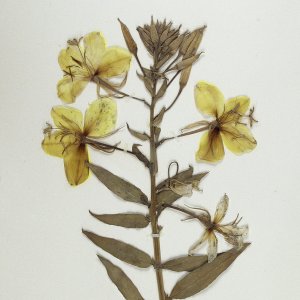
Botany collection
Curator:
Gennady Kurilin.
1 794 specimens of herbarium leaves, fruits,
seeds, fragments of trunks, individual leaves, etc.
The first
herbarium material collected by Darwin museum’s founder Alexander Kohts in the early 20th century is mainly of memorial value.
A historically
important exhibit is a small herbarium sent to Alexander Kohts by Hugo Marie de
Vries, a Dutch botanist and one of the first geneticists. The specimen
illustrates the experiments of the latter on the evening primrose (Oenothera
lamarckiana). Unfortunately, over time, this herbarium has lost its colors.
The
herbarium collected by V.V. Kozhemyakin in the early 70s in the northern aimags
(provinces) of Mongolia is of great scientific value. It contains 740 herbarium
sheets.
Of certain
interest is the crops material of barley, wheat, rye and triticale (a hybrid of
wheat and rye), collected in Dagestan at an experimental breeding station near
the city of Derbent. It is used in museum permanent exhibition to illustrate
the laws of genetics.
Herbariums with clover leaves that are
trifoliate, quatrefoiled, cinquefoil, or septfoil are also interesting.A
herbarium sheet with the evening primrose (Oenothera lamarckiana) – a gift from
Hugo Marie de Vries.

Archive collection
Curator: Nikolay Vasiliev.9 792 objects, including scientific documents and research papers, as well as correspondence.The basis of this collection is the personal archive of the Museum’s founder and first director Alexander Kohts, his spouse - zoopsychologist Nadezhda Ladygina-Kohts, as well as some other employees who worked at the Museum since the very beginning.The collection includes personal archives of an animalist artist Michael Ezuchevsky, who used to work for Darwin museum, and the one of his father – a renowned physicist Dmitry Ezuchevsky, as well as the archive of a prominent Russian scientist, zoologist and naturalist remembered for his work on mammalogy Sergey Ognev.5 genuine letters of Charles Darwin, addressed to Dr. A. Ernst, are of special historical and cultural value. Currently, the Archive collection is being systematized and cataloged. A letter from Francis Darwin, the son of Charles Darwin, to Dr. A. Ernst.A letter from Charles Darwin to Dr. A. Ernst.The noble birth certificate of Michael Ezuchevsky, 1903.
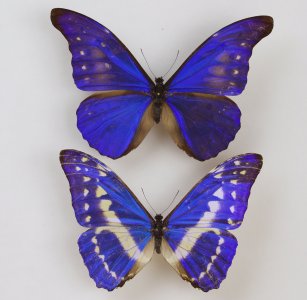
Lepidoptera collection
Curator: Vasiliy Tuzov.
52 568 specimens. It is
based on tropical butterflies donated to the museum by a private collector A.S.
Khomyakov, as well as purchased by Alexander Kohts from the company of
Rosenberg (England) and from the company of A. Blanca, Moscow (in total about 1
000 specimens).
The most
notable ones are of the genera Ornithoptera, Trogonoptera, and Troides (a
family of Swallowtail butterflies), as well as about 60 specimens of the genus
Delias (the Pieridae family), collected in the late 19th - early 20th centuries
on the New Guinea island, the Bismarck Archipelago and the Solomon Islands by
Albert Meek. A number of these
butterflies are part of the museum’s permanent exhibition and are displayed on
the 3d floor in the Zoogeography hall.
Another remarkable
although not as numerous part of Lepidoptera collection is butterflies (about
50 specimens) collected by Eugène Le Moult in Saint-Laurent-du-Maroni, a town
in French Guiana at the beginning of the 20th century.
In the 1970s
and the 1990s the Museum collection was replenished by private collections of prominent
Russian scientists and professors.
About 21 000 specimens - a collection of butterflies from the territory of the former USSR. For example, the selection of the Tien Shan
blue (Agriades pheretiades) is represented by more than 250 specimens and
covers all known at that time subspecies living in the mountain systems of the Tien
Shan and Pamir-Alai.
More than 14 000 specimens of butterflies and moths from not
only the territory of the former USSR, but from South America and Southeast
Asia, including the Sunda and Maluku Islands, as well as the New Guinea.
Swallowtail butterflies. Since the mid-80s, the museum purchased extensive scientific material from private collectors - 2 530 specimens:140
specimens of the genus Ornithoptera and Troides1 000 specimens of
various species of the genus Parnassiusa number of the
Himalayan-Tibetan fauna speciesabout 70 specimens of 40 species of swallowtail
butterflies new to the museum's collection.
In recent years, the collection has been replenished mainly by the efforts of the museum’s chief
curator Pavel Bogdanov (about 8,000 specimens from various regions of Central
Asia, the Caucasus, the Polar Urals and the southern part of Transbaikal), as
well as through occasional collections by museum employees, purchases and taxidermy
mounts made of old materials received from some Moscow collectors.
The
collection materials were used to define a number of new species and subspecies
of butterflies on the territory of Russia and neighboring countries (former
republics of Central Asia, China, Mongolia).
Currently,
the collection contains 627 type specimens (holotypes, paratypes, neotypes) of
various species and subspecies of butterflies described in the period between 1993
and 2006, which makes the collection scientifically valuable. Both domestic and
foreign lepidopterologists regularly use the materials for their research.
Color photos of about
two hundred specimens are used in systematic tables of “Guide to the
Butterflies of Russia and adjacent territories” by V.K. Tuzov, P.V. Bogdanov, vol.
1 (1997) and vol. 2 (2000).
The drawer with the Adonis blue (Lysandra bellargus Rott.).The drawer with the banded Apollo (Parnassius delphius Ev.).
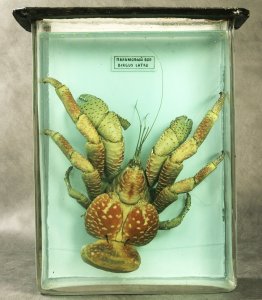
Spirit collection
Curator: Arthur Kudryavtsev
2 148 fluid-preserved specimens. It was traditionally used as a raw material to replenish collections of taxidermied animals and other exhibits. The collection represents all classes of vertebrates and several systematic groups of mollusks, sponges, crustaceans, worms, and insects. It was formed according to the main idea of the museum – to highlight the main problems of evolution.
A significant number
of the specimens were purchased by Alexander Kohts from foreign trading
companies, such as Schluter (Germany), Fritsch (Austria-Hungary), Scheer
(Russia). In 1918, Professor Yury Belogolovy passed to Kohts a collection of
African Polypterus and some other fish, which he collected during the
expedition to the Congo and the Niger River basin, organized by the Moscow
Society of Naturalists in 1914. Some species were donated by Sc.D. Maria
Sadovnikova-Koltsova.
Among the vertebrate
specimens the most numerous are the amphibians, reptiles, and fish. The
specimens allow us to demonstrate the diversity of life forms in the kingdom Animalia,
including those interesting in terms of their external morphology, such as:salamanders
and frogs (the olm, some species of newts, the salamander, the Mole salamander,
the common midwife toad, the common Suriname toad, tree frogs)reptiles (the
thorny devil, some species of chameleons, various species of snakes)a variety
of fish (Elasmobranchii, Lungfish, Polypteriformes).
The collection
contains almost all systematic groups of invertebrates, including:SiboglinidaeComb jellies (Ctenophora)CnidariaSpongesEchinodermTunicateMolluscavarious worms (including parasitic ones)most arachnid and insect orders. A number of the collection specimens allow to demonstrate the basic patterns of
individual development in insects (Hymenopterans, Diptera or flies). There are also
examples of rare species of tropical Myriapoda and Arachnida.
Worth to be noted is a
decent collection of various species of African fish collected in Ethiopia between
1986 and 1995, as well as botanical specimens, various species of sponges,
echinoderms, corals, fish, amphibians, and reptiles collected in Brazil,
Australia, the islands of New Guinea, New Caledonia, Fiji, New Hebrides, Lord
Howe Island, as well as the atolls Funafuti and Marakei between 1971 and 1983.
Valuable material on crustaceans (various types of crabs) in recent years was
brought from expeditions to Thailand and Malaysia (the Andaman Sea) by Darwin museum
employee Alexander Alyakrinsky.
Of great
scientific interest is the collection of bird embryos, comprising 218 specimens,
donated to the Museum. This collection of 22 species of different families
demonstrates species-specific features of embryogenesis.
The
collection of spirit brains of mammals deserves special attention. It contains
specimens of:MarsupialsPilosaEulipotyphlaRodentsLagomorphsCarnivoresPinnipedsCetaceansProboscideaTylopodaeven-toed ungulates and odd-toed
ungulates.This collection, obtained from the Moscow Zoo, comprises 173 specimens.
Of particular interest
are the fluid-preserved newborns and young mammals of almost all the main
orders starting from marsupials and insectivores to pinnipeds and primates.
Some samples demonstrate examples of common individual development disorders,
such as abnormally developed calves.
Today, the collection
is completed by occasional collections by museum employees, as well as through donations
of raw materials from the Terrarium Center and the Moscow Zoo.
Chameleon (Chamaelio
sp.) on the left and the thorny devil (Molochus harrydius Gray) on the right.
The thornback ray (Raja clavata) and the catshark
(Sciliorhinus beshardi).
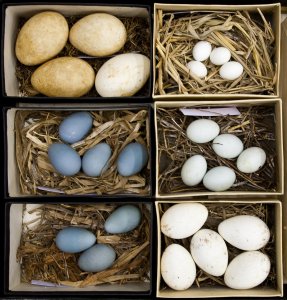
Bird egg and nest collections
Curator:
Igor Fadeev
7 119 nests, clutches, and individual eggs. First clutches of eggs were
bought by Alexander Kohts in 1913 from European trading companies, including
nests and clutches with cuckoo eggs, illustrating the phenomenon of nest
parasitism and the evolution of nest-building skills. The oldest specimens date
back to the 1870s. In the 1920s, a private collection of bird eggs was donated
to the museum. Unfortunately, it was poorly labeled. Nevertheless, it represents
almost the entire European Avian fauna. Later, a collection of bird nests collected
by Sc.D. Maria Sadovnikova-Koltsova, including a series of nests of African
weavers at different stages of weaving, completed the museum’s collection.
The collection holds samples from:AustraliaArgentinaBrazilVenezuelaColombiaCosta RicaPeruIndiaWestern EuropeYet the majority of
specimens come from Russia and the former Soviet republics.Of particular value
is the egg of the extinct Madagascar ostrich-like Elephant bird, a member of
the extinct ratite family Aepyornithidae. It was made up of fragments of a
genuine shell, donated to the museum in 1999 by Moscow Mayor Yury Luzhkov.
No less interesting is
a series of eggs of various breeds of poultry, primarily chicken and goose.
Today the collection
is regularly replenished by specimens from private collections as well as those
collected by the Museum’s employees.
The nest of a long-tailed
tit (Aegithalos caudatus L.).
Nests and clutches. The upper left is of the northern
lapwing (Vanellus vanellus L.), the upper right is of the European robin (Erithacus
rubecula L.), the lower left is of the common redstart (Phoenicurus phoenicurus
L.), and the lower right is of the northern wheatear (Oenanthe oenanthe L.).

Insect nest collection
Curator: Tymophey
Levchenko.
203 specimens. The core is a selection of
nests of various insects purchased by Alexander Kohts in Germany from the
company of W. Schluter, as well as nests of Hymenopterans collected individually
in the 1930s by entomologist A. Gutbir, commissioned by Alexander Kohts.A
significant part of the collection consists of nests of different species of
Hymenoptera and termites, collected by Sc.D. Maria Sadovnikova-Koltsova. The specimens
were selected mainly to be displayed in the future permanent exhibition of the
museum.
The nest of a red wood
ant (Formica rufa L.), insection.The nest of a common wasp (Vespula vulgaris L.).

Graphics collection
Curator:
Antonina Nefedova
9 234 specimens, including all kinds of graphic works -
drawings (pencil, ink, drybrush, sanguine, pastel, sauce, felt-tip pen),
watercolors (colored, grisaille), mixed media (watercolor-gouache,
watercolor-tempera, gouache-tempera, and other combinations), lithography,
linocut, woodcut, etching.
Graphic works of various topics. Basically, these are sketches
from life and various kinds of plot compositions (often sketches) by the
leading Russian animalist artists of the classical school - V.A. Vatagin, V.V.
Trofimov, V.A. Belyshev, K.K. Flerov, N.N. Kondakov, E.E. Nikolsky, A.N.
Komarov, A.N. Formozov, G.N. Glickman, as well as artists of a later period -
L.V. Khinshtein, I.P. Makoveeva, S.V. Tsigal, V.A. Gorbatov, M.M. Kukunov, V.M.
Smirin.
Book illustrations for various scientific, popular
science, fiction, and children's books by V.V. Trofimov, N.N. Kondakov, O.F.
Khludova, V.A. Belyshev, A.N. Komarov, G.E. Nikolsky, and other authors.
The jewel of the museum collection is a series of graphic images of monkeys depicting their
emotional manifestations and psychological state by Vasily Vatagin, as well as
scientific graphic reconstructions of fossil animals by Konstantin Flerov. They
were commissioned specifically for the future museum’s permanent exhibition.
In addition to works of the animalistic genre, the collection also contains graphic works on historical topics, such as pastels by Mikhail Ezuchevsky on the history of the natural science topic."The family of lynx" by A.N. Komarov. Dry brush on paper, 1969."An eagle with prey" by A.N. Komarov.Oil tinted autolithograph, the 1950s.
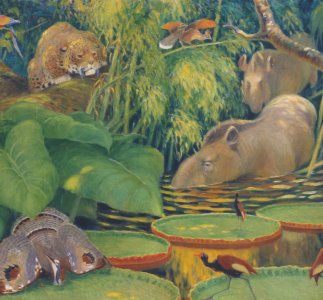
Paintings collection
Curator: Antonina
Nefedova.
1 850 artworks performed on canvas, cardboard, and plywood
(mostly oil, less often tempera).Since the beginning of the 20th century, at
different times, the best Russian animalist artists such as V.A. Vatagin, A.L.
Komarov, N.N. Kondakov, V.V. Trofimov, K.K. Flerov, A.N. Formozov, V.A.
Belyshev worked for the museum. Their wonderful paintings, a significant part
of which can be seen at the museum's permanent exhibition, is the heart of the
collection. A well-known series of paintings (oil on canvas) by V. A. Vatagin
on the topic of zoogeography, sketched from the author's watercolors, were
commissioned for the "Atlas of zoogeography" by Professor M. A.
Menzbira published in Moscow, 1911.
Of great interest are paintings
by Vasily Vatagin and Konstantin Flerov depicting extinct animals with great
scientific accuracy. Most of them are also exhibited in Darwin museum halls. A
significant number of paintings by Vasily Vatagin, Konstantin Flerov, and Mikhail
Ezuchevsky is covering one topic - "Animals in the service of man".
White-headed Cockatoo by
Vasily Vatagin. Oil on cardboard, 1919.
Portrait of a young Charles
Darwin with the botanist John Henslow by Viktor Evstafiev. Oil on cardboard, 1960.
Cassowaries by Vasily
Vatagin. Oil on canvas, 1938.Fauna of the mountainous areas of Indochina by Vasily Vatagin. Oil on canvas, 1939.

Coleoptera collection
Curator: Tymophey Levchenko.
64 373 specimens (including over 63 thousand beetles).
The core of this collection is the specimens from the private collection of
A.S. Khomyakov and materials purchased from the company of A. Blanca (Moscow).
These are mainly tropical beetles, orthoptera, cicadidae, hymenoptera, and odonata
mostly from various regions of Central and South America, Western and Southeast
Asia, as well as the islands of the Malay archipelago.
Worth to be
noted is a collection of beetles gathered and mounted in double-sided boxes
made in the shape of books at the end of the 19th century. This collection comprises
about 30 000 specimens the majority of which is attributed to the families of Scarabaeidae,
Lucanidae, Buprestidae, and Cerambycidae covering pretty much the whole of the
world fauna. Unfortunately, the collection at one time was seriously affected
by pests. At the moment, the museum staff is carrying out its systematic
restoration.
A
great variety of Palaearctic species of the Carabidae (the genus Carabus,
Callisthenes and Calosoma) and Scarabaeidae families. 26 type specimens (paratypes) of various subspecies of Ground beetles (the
genus Carabus) described by D.V. Obydov in the 90s, which increases its
scientific value.
In the 1970s,
the collection of beetles was replenished with interesting specimens collected in
the northern aimags (provinces) of Mongolia by the former chief curator of Darwin
museum V.V. Kozhemyakin.
In the 1980s,
significant scientific material was purchased from Moscow entomologist M.L.
Danilevsky. It included mainly specimens of the families Carabidae, Cerambycidae,
and Tenebrionidae.
Over the
past 20 years, the collection has expanded significantly due to regular collections
by the museum staff - D.V. Obydova and O.A. Gvozdeva - on the territory of
Russia and the republics of Central Asia, as well as through occasional
contributions of other employees.
Tropical jewel
beetles (Buprestidae family).Tropical cicadas (Tosena sp.).

Herpetology collection
Curator:
Dmitry Myloserdov
292 taxidermied amphibians and reptilesas well as some osteological
material. The most notable specimens are taxidermy mounts of such rare species
as the gharial, tuatara, Galápagos giant tortoise, the aldabra giant tortoise,
and the giant salamander (Andrias) bought by Alexander Kohts in 1913 from
various foreign companies (Schlüter, Umlauf, Rosenberg), as well as skulls of
very large specimens of the Nile crocodile and the family Gavialidae.
Of interest is a decent
selection of different types of Palearctic and North American snakes.In recent
years, the collection has been replenished with specimens (mainly snakes and
lizards) collected by the museum staff during expeditions to Soviet Central
Asia and Primorye (the Far East of Russia, Khabarovsk Krai, and Primorsky Krai).
Toads. The European
green toad (Bufo viridis Laur.) on the left and the common toad (B. bufo L.) on
the right.
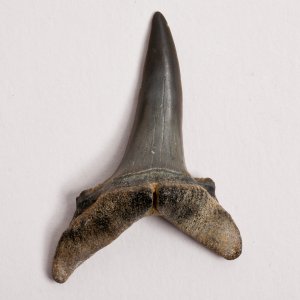
Fossil shark teeth collection
Curator: Eugenia
Baykina.
113 010 specimens and dates back to the mid-50s of the
20th century. Formed by a renowned paleichthyologist from St. Petersburg Leonid
Glickman, it contains specimens from various regions of Ukraine, the Volga
region, Kazakhstan, and Soviet Central Asia.
Today it
includes material collected by V.I. Zhelezko and V.A. Kozlov (Yekaterinburg),
as well as fragmented material from other private collectors.
The collection is of great scientific value as its materials provided the necessary information
for Leonid Glickman to write two extensive monographs - “Paleogene Sharks and
Their Stratigraphic Significance” (Moscow, 1964) and “The Evolution of
Cretaceous and Cenozoic Lamnoid Sharks” (Moscow, 1980), as well as several
articles in which the author defines several new species and genera. The type
material (holotypes) representing new taxa significantly increases the collection’s
scientific value.
The collection is of
significant interest to paleontologists with various specializations.
Teeth of a
fossil shark (Striatolamia usakensis Glickman).
Ammonite (Simbirskites
sp.).Brachiopods (Choristites sp.).
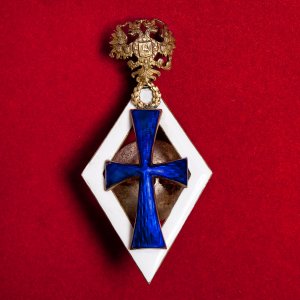
Collection of medals and awards
Curator: Varvara Mironova
Collection contains 231 items. It consists of orders and medals awarded to the museum on separate occasions, as well as to museum employees (F.E. and D.Ya. Fedulov, V.N. Ignatyeva) and various jubilee diplomas and certificates of appreciation. In addition, it contains prize medals and diplomas awarded to museum exhibits (mostly horns of ungulate) at international hunting trophy exhibitions (Hungary, Bulgaria).
Cross of St. George of the third and fourth classes belonged of taxidermist F.E. Fedulov.
Grand Prix medal and diploma of the EXPO-81 exhibition in Plovdiv (Bulgaria). 1981.
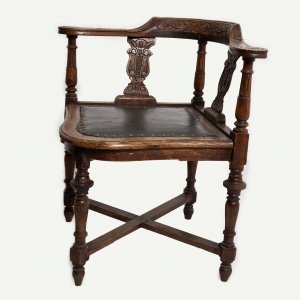
Museum History Collection
Curator:
Anna Vasylyeva1 495 objects, including everyday items and working tools
of the Museum’s employees (Alexander Kohts, Nadezhda Ladygina-Kohts, Philipp
Fedulov), as well as furniture of Alexander Kohts, Nadezhda Ladygina-Kohts, and
Russian embryologist, professor Alexander Kowalevsky.
Taxidermy
instruments of Dmitry Fedulov. The office of Alexander Kohts with authentic furniture, books, and personal belongings.
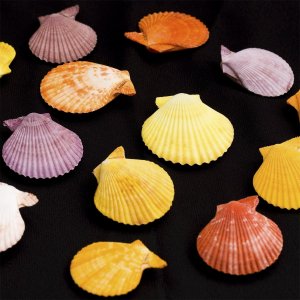
Mollusc collection
Curator: Alexander
Alyakrinsky.
20 325 specimens. It was started by Alexander Kohts in the
early 20th century. Among the earliest arrivals is a collection of marine
tropical molluscs of E.K. Popov and a collection of terrestrial gastropods from
the Hawaiian Islands. In the 1970s, the museum collection was replenished by
more than 1000 specimens of tropical molluscs collected during the Pacific
expeditions of the Institute of Oceanology of the Russian Academy of Sciences
(1971 and 1977) to the littoral zones of New Guinea, Fiji, Western Samoa, New Caledonia,
Nauru, Tuvalu, Lord Howe Island, New Hebrides Archipelago.
Between 1981 and 1986
Moscow collector K.N. Gaidenko donated to the museum 7 479 shells of marine
gastropods and bivalves. In 1992, the museum acquired a valuable collection of
land molluscs from Russia and neighboring countries, collected by A.G.
Kuznetsov (about 1 100 specimens). In recent years, the collection has been
intensively replenished with the help of a Museum employee Alexander
Alyakrinsky (about 4 000 specimens of marine, freshwater and land molluscs from
Central Asia, Siberia, the Far East, and various regions of Southeast Asia).
502 specimens of 136 species of cone
snails (Conidae). Their illustrated description was published as a catalog in 2005.
490 specimens of Murex - carnivorous
marine gastropod molluscs in the family Muricidae - as well as cones, are predators.
They mainly prey on bivalve mollusks. To eat such a mollusk, murexes drill a
small hole in the victim’s shell, or crush the latter by squeezing it between
the horny lid and the opening of its shell. Many murexes have a very beautiful
shell. In some species, it is decorated with bizarre outgrowths and spikes.
506 specimens of Cypraea, or cowries,
are also very beautiful. The surface of their shells is very smooth, as
if polished. For centuries, the shells of some types of Cypraea have been used
as a means of payment not only in the tropical countries which they inhabit
but also far beyond their borders. Some of the specimens are exhibited in a showcase of the Zoogeography hall.
1 400 specimens of Achatenillidae - a family of terrestrial molluscs. All of them live on the tropical islands of the Pacific
Ocean, mainly in Hawaii. Their shells are of very bright color and exhibit
strong individual variability.
The major part of Darwin
Museum molluscs collection is well labeled, preserved and is of scientific value
to malacologists.
Scallop shells (Chlamys
rubida Hinds) in the upper left corner, Pecten irradians Lam. in the upper
right corner, Lyropecten nodosa L. at the bottom.
Cones. From left to right: Conus tessulatus Born., Conus bengalensis Ocut., Conus amadis Gmelin, Conus vitulinus Hwass.
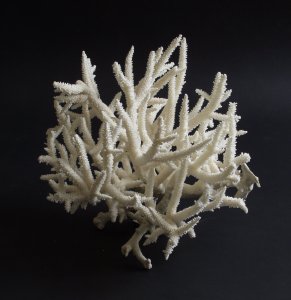
Marine Invertebrate Collection
Curator: Alexander
Alyakrinsky.1 083 specimens - mainly corals, echinoderms and sponges collected
during expeditions to the Pacific of the Russian Academy of Sciences in 1971
and in 1977.
Most corals
belong to the Madreporaria order, which forms the basis of the tropical coral
reef ecosystem, providing shelter and food for many marine animals. These
corals are the main "culprits" for specific coral islands – atolls- to
appear. The origin of the latter at one time was brilliantly explained by
Charles Darwin. Unfortunately, it is technically very difficult to maintain the
complete colony of Anthozoa. Therefore, museums mainly store their calcareous
skeletons. The most remarkable of them are representatives of the Acroporidae
family, having bizarre branchy shapes.
Of special
interest are brain-like corals of the family Faviidae. The skeletons of all
these corals are white. However, in the museum’s collection there is a coral
with a blue skeleton - Heliopora coerulea- the only representative of the
helioporidae family (Helioporidae).
In total, the museum collection holds 470 coral specimens.
Echinoderms
are represented by starfish, sea urchins, brittle stars or ophiuroids, and sea
cucumbers. The majority of the echinoderm collection is starfish with a total
of 360 specimens. Among them, a long series of large sea stars Protoreaster
nodosus (72 specimens) collected on the tropical islands of the Pacific Ocean.
This star, which has numerous massive spikes, has a pronounced individual
variability.
Of ecological interest
is the crown-of-thorns starfish (Acanthaster planci) with venomous thorn-like
spines, which preys upon hard, or stony, coral polyps and damages huge sections
of coral reefs.
Brittle stars or serpent
stars - a group of invertebrates that got its name due to long, filiform,
sometimes branchy rays. Unlike predatory sea stars, brittle stars feed on
plankton or detritus.
Sea urchins are of
great variety. The collection contains the so-called “drilling” sea urchins
which make burrows for themselves in coral reefs, as well as the common sand
dollar - Echinarachnius parma – a round plate with very short, barely
noticeable needles, and the slate pencil urchin - Heterocentrotus mammilatus - with
massive, thick, faceted needles, etc.
A selection
of sponges (113 specimens) is represented by both marine and freshwater
species. Among the sea sponges, of certain interest are representatives of
Ianthellidae family, a wide range of which was collected on the Admiralty
Islands in the Pacific Ocean, as well as the very large glass sponge Rossrlla
sp.
Among freshwater
sponges, the most notable is Lubomirskia baikalensis - a freshwater species of
sponge endemic to Lake Baikal, Russia. These sponges are branched and reach a
height of more than one meter.
Individual variability
of the starfish Protoreaster nodosus Lam.Alcyonacea, or soft corals (Gorgonaria sp.).
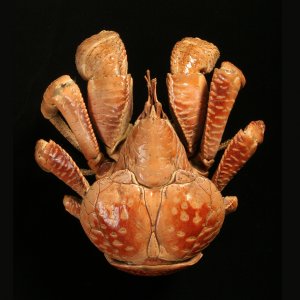
Crustacean collection
Curator:
Alexander Alyakrinsky.
955 specimens. The core of the collection is about 400 crabs
collected during the expedition of the Institute of Oceanology of the USSR
Academy of Sciences to the islands of the Pacific Ocean in 1971. Later, the
collection was replenished by Alexander Alyakrinsky, who brought more than 100 crabs
from Malaysia, Thailand, the Sunda Islands, the Maluku Islands (Indonesia), and
the Philippine Islands, as well as occasional gatherings of other museum employees.
The jewel of the
collection is the giant Japanese spider crab (Macrocheira kaempheri), acquired
by the founder of the museum Alexander Kohts in 1919. The giant crab belongs to
the family of so-called spider crabs (Majidae), one of the largest families of true
crabs. This family also includes species of much smaller sizes, many of which
are part of the museum's collection. Some of them are known for their ability
to disguise. For example, they may attach various algae to the upper surface of
their carapace, which makes them almost invisible on the seabed.
Crabs of the
Dorippidae family, also widely represented in the Darwin Museum collection, use
other means of disguise. They hold above empty shells of bivalve mollusks themselves
with the help of two pairs of legs specially adapted for these purposes. While
swimming crabs of the Portunidae family act differently when facing danger. They
use their sharp claws, so very few predators would dare to attack them. Judging
by their name, swimming crabs are also notable for their ability to swim. The
museum’s collection contains more than 50 specimens of these crustaceans.
Fiddler crabs (genus
Uca) also have large claws, but only one and only the males. They are most well
known for their sexually dimorphic claws - the males’ major claw is much larger
than the minor claw while the females’ claws are both the same size. The
smaller claw is used to grab food - silt. The role of a large claw is to signal
that the territory is occupied or to lure a female. Each species of fiddler crabs
has its own "gesture language." The museum collection holds more than
40 specimens of fiddler crabs.
12 species of endemic
amphipods of Lake Baikal are also of great scientific value.Fiddler crab (Uca vocans L.). Female on the left, male on the right.
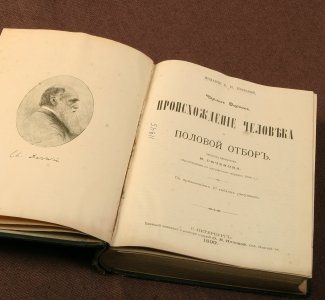
Rare Books Collection
Curator: Varvara Mironova
More than 9 245 books from the middle of the 16th to the
end of the 20th century in English, French, German, and Russian languages.
The Rare
Book Collection used to be part of the Museum’s general book collection in
1982. Today it includes natural science publications before early 20th century,
books with inscriptions made by famous biologists, books from the library of
the Museum founder and the staff, books on biology published during the Eastern
Front of World War II, as well as limited-edition books of the 20th century. Nowadays,
the fund is regularly replenished annually mainly by personal donations.
The oldest books in
the collection date back to the Late Middle Ages and are written in Latin. Among the most
notable publications are the seven volumes of the encyclopedia by a Swiss scientist
Conrad Gessner (1516-1565), twelve volumes of the works by an Italian naturalist
Ulisse Aldrovandi (1522-1605), books by French naturalist Pierre Belon (1517-1564).
One of the most
unusual and interesting works of the 17th century is “Arca Noe” (1675) by a
German Jesuit scholar and polymath Athanasius Kircher (1602-1680). The book
contains detailed drawings of Noah’s ark, description of the ship’s buoyancy mechanism,
a map of the Earth of the 17th century, and even a map of Paradise. Moreover,
Kircher calculated how much food for animals Noah needed to store, what size
cages had to be, how people and animals were to be placed on a ship. The book holds
images of animals with names in five languages.
Some books
are of particular interest due to their unusual history. These include the
multivolume “Herbarium Amboinense” (1750) by Georg Eberhard Rumphius (1627-1702)
- a German-born botanist employed by the Dutch East India Company - which
includes a tragic story of his personal life. He had been working on the 12
volumes catalog of the plants of the island of Amboina for thirty years, but
never saw his work published. When carrying out the research, the scientist
became blind from glaucoma; his wife and a daughter died in an earthquake. When
the work was almost finished, the illustrations burned in a fire and had to be
restored later; the early copies of his book were lost when the ship carrying them
to the Netherlands to be published was sunk by the pirates; and finally, 12
volumes of the manuscript that arrived safely in Amsterdam were banned by the
censor committee. The book was published only 39 years later, after the death
of the researcher, in 1741.
One of the rarest
and valuable books is the “Birds of America” by John James Audubon, published
from 1827 to 1838. The first and very rare edition consists of four complete albums
of engravings depicting life-size birds. The Rare Book Collection also contains
the first edition of the text from the sequel “Ornithological Biographies” (1831–39),
as well as two subsequent editions of “Birds of America” with images and text
combined.
In the collection houses
some unique and very unusual editions, such as the book by Alfred Ronalds “The
Fly-Fisher's Entomology” (1913) first published in 1836. This is the eleventh and
final edition of the book. Although the work was Ronalds' only book, it has
been extensively reprinted in the last 100 years. Of particular interest is the
album of fishing hooks with artificial flies designed to imitate real insects, as
well as instructions for their manufacture.
The Rare Books Collection
contains periodicals and magazines both scientific and popular from different time
periods. The most notable one is “Curtis’s Botanical Magazine” - the oldest
existing botanical magazine, which has been published for more than 225 years.
“The Birds of China”
by Armand David, 1877.Animals by Ulisse Aldrovandi, 1639.
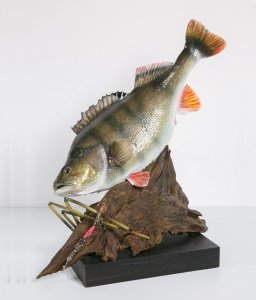
Fish collection
Curator: Yury
Mylosyerdov.
294 taxidermied freshwater and marine fish, as well as bones mainly of
Chondrichthyes. The collection was formed rather spontaneously and consists of
occasional donations from various sources. Recently the museum has been
receiving material from the Moscow Zoo aquarium and the Terrarium Center. Most
of the specimens from this collection were used in the Museum’s permanent exhibition,
such as the Coral Reef diorama.
Of
undoubted interest is a series of 26 rostrums of various types of Sawfishes,
also known as carpenter sharks (Common, Green, Smalltooth sawfish and others)
of various sizes, clearly illustrating intraspecific and age-related
variability, as well as the jaws of various species of sharks (tiger, oceanic
whitetip, grey nurse shark) and rays. These materials were purchased long ago
from the company Umlyauf (Hamburg, Germany). In addition, the collection
contains a good selection of taxidermied boxfishes and pufferfish.
Shark jaws. Sand tiger
shark (Carcharius taurus Raf.) on the left. Oceanic whitetip shark (Carcharinus
longimanus Poey) on the right.A fragment of the Coral Reef showcase of the Museum’s permanent exhibition.
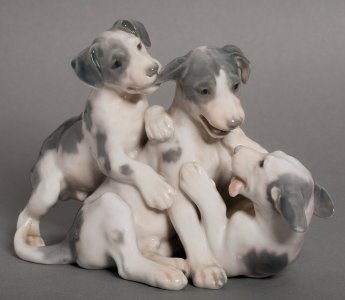
Sculptures collection
Curator: Antonina Nefedova.
The collection holds 1
331 artworks – both monumental and small sculptures made of plaster, marble, ceramics, porcelain,
terracotta, chamotte, wood, bronze, and other metals.
Some
notable monumental sculptures were made by V.A. Vatagin, K.K. Flerov, and V.V.
Trofimov - plaster sculptures of various animals, both fossil and living, usually
life-size. These works are remarkable for their impeccable scientific
authenticity, the beauty of postures and forms, the elegance of lines.
Of great interest is
the extensive series of reconstructions of primitive man (busts) made in full
size in tinted plaster by M.M. Gerasimov, many of which are part of the museum’s
permanent exhibition.
Since the beginning of
the 1980s the museum has been collecting small animalistic sculptures,
including the artworks of V.V. Trofimov, A.V. Marts, A.M. Belashov, M.G.
Ostrovskaya, D.Ya. Uspensky, B.Ya. Vorobyev, G.N. Popandopulo, O.V. Malysheva,
A.S. Tsvetkov, S.A. Kazansky, S.E. Peshekhonov, and other authors. The exhibits
of this collection are often used at various temporary exhibitions held at the
museum.
Moeritherium (on the left)
and Palaeomastodon by K.K. Flerov. Plaster.
A pheasant
by S.A. Kazansky. Bronze.A walking mandrill by B.A. Vorobiev. Chamotte.
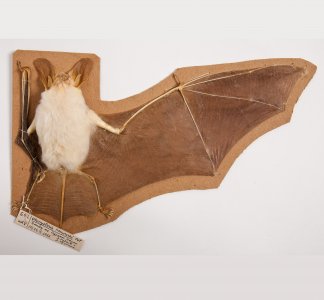
Stuffed Mammal Skins collection
Curator: Natalia Krasnykh.
The collection
maintains 2 654 specimens, including the skins of small and medium-sized
mammals stuffed with cotton or other soft material (from the smallest species
to the groundhog and raccoon).
The first stuffed
skins of mammals were bought by Alexander Kohts, along with many other exhibits
from a number of well-known European companies in 1913. Most of these skins were
later used to make taxidermied animals between 1914 and 1953. Among the specimens
that remained in the original form, there are three notable skins of Australian
short-beaked echidna (Tachyglossus aculeatus) purchased from the London trading
company of Rosenberg, as well as individual specimens collected by well-known
professional collectors of that time - A. Everett, S. Underwood, M. Palmer.
In 1920, the Museum
bought a private zoological collection of V.N. Nikitin gathered in 1912 during
a trip to German East Africa, including two stuffed skins of the Gambian pouched rat (Cricetomus
gambianus). Between 1930 to 1950, the Museum collection was replenished by over
500 specimens collected in the Caucasus, Saratov Region, Siberia), Central
Russia, Central Asia.
The main
and the most valuable part of the stuffed skins collection is the private collection
of the famous mammalogist and zoologist, Professor Alexander Kuzyakin. It
contains all species of Chiroptera, Eulipotyphla, and Rodentia of the former
USSR territory, as well as some specimens of the faunas of China and the United
States. Material from the United States, among which are quite old specimens
dating back to 1891 - 1923, was obtained through scientific exchange with the
American colleagues - mammalogists.
Specimens from this
collection are distinguished by the excellent quality of specimen preparation and
scientific labels, as well as the accuracy of definition. The collection comprises the material of such rare species as the desert long-eared bat, the European
free-tailed bat, the Hilgendorf's tube-nosed bat, piebald shrew, the large-eared
vole and the Gobi Altai mountain vole, the Schelkovnikov's pine vole, the Transcaspian
vole, the Daghestan pine vole, the snow vole, the Roborovski hamster, and the desert
dormouse. The fauna of the Caucasus, the Far East, and the Moscow Region has the
best representation in the collection. Very valuable material is from China
(125 copies), as it is poorly represented in collections around the world.
A significant number
of specimens of the collection were used by animal artists N.N. Kondakov and
O.F. Khludova to illustrate “The Catalogue of Mammals of the USSR” (N. A.
Bobrinsky, B. A. Kuznetsov, A. P. Kuzyakin, 1965). The collection has great
scientific value and is often used for reference by mammalogists from various
scientific institutions of Russia.
Today, the collection is replenished by occasional collections by museum employees in
Russia.
The stuffed
skins of bats – the desert long-eared bat (Otonycteris hemprichi Peters) on the
left and the European free-tailed bat (Tadarida teniotis Rafinesque) on the
right.
The stuffed
skins of the Djungarian hamster (Phodopus sungorus Pallas) and Roborovski
hamster (Phodopus roborovskii Satunin).
A collection box with stuffed skins of Djungarian hamsters (Phodopus sungorus Pallas) and Roborovski hamsters (Phodopus roborovskii Satunin).

Bird skin collection
Curator: Igor Fadeev.
The collection
contains 7 118 specimens. It is still being regularly replenished today, but
the majority of specimens date from the late 19th to the early 20th
centuries. A significant number of valuable specimens were collected by
well-known foreign ornithologists at the end of the 19th – the beginning
of 20th century in various regions of Africa, Southeast Asia,
including the islands of the Malay archipelago, Central and South America. The specimens
of this collection were originally intended as materials for future taxidermied
animals and for exchange. Nowadays, bird skins have independent significance as
valuable scientific and memorial objects.
The collection represents
groups of exotic birds, such as Tanagers, Cacique, Hummingbirds, Birds-of-paradise,
which are quite rare in the collections of Russian natural science museums.
In the 80s, the collection was added with specimens collected by the famous zoologist,
Professor Alexander Kuzyakin on the territory of the former USSR, as well as in
China while he was teaching at Chinese universities in 1957-1958.
Today, the collection
is actively replenished by Darwin museum employees, who annually collect
valuable scientific material on the territory of Russia. Moreover, there is an
active scientific exchange with American colleagues from the Burke Museum of
Natural History and Culture (University of Washington, Seattle) and The University of Minnesota, Twin Cities (Minneapolis and Saint Paul, Minnesota),
as well as the University of Alaska Anchorage (UAA). As a result of such
collaboration, 335 specimens of birds of the North American fauna were added to
the collection. In the last decade, along with collecting material for the Museum’s
collection, the museum employees have been taking tissue samples for genetic
analysis, which significantly increases the scientific value of the specimens.
A collection box with skins
of birds-of-paradise (family Paradisaeidae)
A part of the black
grouse (Lirurus tetrix L.) skins collection.
A collection box with skins
of various species of tanagers (family Thraupidae).A collection box with skins of yellowhammers (Emberiza citrinella L.).
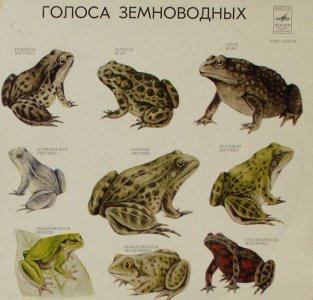
Animal Sounds Recordings
Curator: Alexander
Rubtsov
The collection holds
388 items, including replicated vinyl records, compact discs, cassette tapes and
original recordings on magnetic tape.
The
collection of original records comprises:
1. a
collection of voices of birds (about 300 species, 100 hours of recording);
2. a
collection of mammalian voices of the Department of Vertebrate Zoology, Moscow
State University (80 species, about 700 hours of recording);
3. records made
by Darwin museum employee Alexander Rubtsov.
All original
recordings are digitized and stored on CDs in WAV format. Each file is
accounted in the database. Currently, the materials of this collection are
widely used in the permanent exhibition.
Vinyl discs with birds' voices recordings.CDs with mammals' voices recordings.
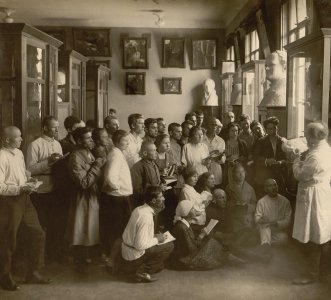
Photo Archive
Curator: Anna
Kurzayeva
The collection comprises 13 090 objects, including all photographs of the museum’s
life since the very beginning.
Of
considerable interest are photographs illustrating the zoopsychological experiments
with anthropoid apes, parrots, and other animals carried out by Nadezhda Ladygina-Kohts.
There are also portrait photos of many famous Russian and foreign biologists. Moreover,
the collection holds a significant number of reversal films and photographic
plates.
The main purpose of this collection is to store visual materials/evidence of Darwinm museum’s history, as well as of the history of natural sciences and portraits of prominent Russian and foreign biologists, naturalists, and museum employees. Furthermore, it is a valuable source of photographic materials related to the works of animalist artists and taxidermists who collaborated with Darwin museum.
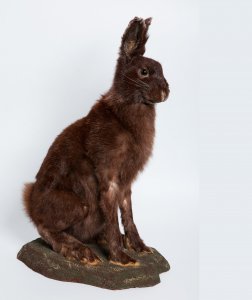
Taxidermied Mammals collection
Curator: Natalia Krasnykh.
The collection
includes 2 543 specimens. It represents outstanding examples of taxidermy art,
including the largest collection of taxidermied animals made in the best in
Moscow taxidermic laboratory of Friedrich Lorenz. The outstanding work of the
Museum’s taxidermist Philipp Fedulov - taxidermied African and Indian elephants
– are the centerpiece of “The diversity of life on Earth” hall at Darwin museum.
Of great scientific
interest are the extensive collections of geographic and individual variability
in foxes and wolves. The collection also contains a significant number of taxidermied
foxes with all kinds of fur color variations made from skins of animals bred in
fur farms. This material had been purposefully selected by Alexander Kohts
since the very beginning of Darwin museum, as he wanted to demonstrate the wide
range of colors in animals at the permanent exhibition. To be noted are the
taxidermied representatives of the Mustelidae family (sable, marten, ferrets, etc.)
and squirrels with fur color variations. Moreover, the collection contains a
wide range of taxidermied animals of various species of wild cats (leopards,
tigers, cheetahs, lynxes, manuls) and bears, as well as some unique specimens
of black and white lynx.
An extensive
collection of taxidermied primates comprises five gorillas, twelve chimpanzees,
twelve orangutans, a large number of taxidermied Old World monkeys and lemurs,
among which of certain interest are four taxidermied aye-ayes. These materials
were purchased by Alexander Kohts from various European companies.
Of great scientific
and historical value is the taxidermied Tibetan bear (on display at permanent
exhibition hall) and the Tibetan antelope made from the skins of animals collected
in Tibet by Nikolay Przhevalsky, a Russian geographer and a renowned explorer
of Central and East Asia. To be noted is the white taxidermied squirrel, collected
in 1906 in the Ussuri krai, Russia.
A significant part of
the taxidermied mammals of the domestic fauna is made of skins received from
the Moscow fur factory. Furthermore, the collection includes some interesting
examples of Western European taxidermy art, and specimens that used to belong to renowned
foreign collectors and scientists.
Since the foundation of Darwin museum, a collection of taxidermied domestic animals has
also been gathered. Today a large selection of different dog breeds
demonstrates the wide possibilities of breeding and preserves samples of old breeding
standards.
The great
number and diversity of the specimens allow creating permanent and temporary exhibitions
on almost any topic related to natural history. The collection is still being
regularly replenished.
A showcase with the geographical variability in tigers (Panthera tigris L.) and leopards (Panthera
pardus L.), permanent exhibition of Darwin museum.
Ring-tailed lemur
(Lemur catta L.). A female with an offspring.Russian desman (Desmana moshata L.), a specimen with the normal color on the left, an albino specimen on the right.
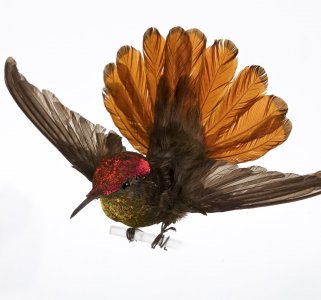
Taxidermied Birds Collection
Curator: Igor Fadeev.The collection contains
6 465 specimens. Along with collections of taxidermied animals and skins of
mammals, this is one of the basic collections of Darwin Museum.
The
following families are most widely represented in the collection: the subfamily
Tetraoninae - 650 specimens, Hummingbirds (family Trochilidae) - 530 specimens,
the Phasianidae family - 380 specimens, the Anatidae family - 382 specimens, Sandpipers
(Scolopacidae) - 332 specimens, the Accipitridae family - 218 specimens. The collection holds a significant number of taxidermied animals from private
collections of famous zoologists P. Sushkin, M. Menzbir, N. Bobrinsky, G. Dementiev.
Some
magnificent taxidermied animals of undoubted scientific and historical interest
were made of skins brought from Tibetan expeditions of Nikolay Przhevalsky.
They are the Tibetan snowcock (Tetraogallus tibetanus), the eared pheasant, the
Tibetan sandgrouse (Syrrhaptes tibetanus ), the Himalayan monal (Lophophorus
impejanus), the white-capped water redstart (Phoenicurus leucocephalus). There
is also a taxidermied white-capped water redstart made from the skin brought by
the famous French Lazarist missionary Catholic priest as well as a zoologist
and a botanist, Chinese explorer Armand David.
The most important scientific division is the collection of grouse birds with color
variations (the black grouse, the western capercaillie, the hazel grouse, the true
partridges) - more than 600 specimens. The collection has been formed by Alexander
Kohts since the beginning of the twentieth century. Later, it was replenished
by specimens from private collections.
No less
significant is the natural hybrids of grouse selection, including 42 specimens
of the black grouse and western capercaillie hybrids, 2 specimens of the western
capercaillie and black-billed capercaillie hybrids, 2 specimens of black grouse
and hazel grouse hybrids, 14 specimens of the black grouse and willow ptarmigan
hybrids.
An
interesting collection of various types of taxidermied Palaearctic falcons (112
specimens) - gyrfalcons, saker falcons, peregrine falcons, and Eurasian hobbies.
Of
considerable interest are also taxidermied tropical birds, especially the
Hummingbirds, Birds-of-paradise (112 specimens), Tangara, Cotingas, Sunbirds, Common
kingfishers.
Of
particular value is the taxidermy mounts of extinct species of birds, such as
the great auk, the huia, the passenger pigeon and the extinct flightless dodo
(Raphus cucullatus) from the island of Mauritius. The collection includes a
number of taxidermy mounts made of bird skins, obtained by famous foreign
ornithologists - Alfred Hart Everett on the Philippine Islands and the island
of Borneo (Kalimantan), Albert Stewart Meek (also known as an entomologist) on
the island of New Guinea, William Frederick Henry Rosenberg in Colombia.
To be noted
is the collection of breeds of poultry - 520 specimens, about 400 of which are
various breeds of domestic hens, including ones that are rare and currently
extinct. In the second half of the twentieth century, some breeds of chickens lost
their value/popularity for various reasons and therefore seized to exist. The taxidermied
hens of these breeds that are part of Darwin museum collection serve as examples
of their exterior. Based on these materials in the 80s and 90s, amateur poultry
breeders made successful attempts to restore some of the extinct breeds,
including the Orloff and the Pavlovsky chicken.
Abnormal coloration
of the plumage of male black grouse (Lirurus tetrix L.).
Taxidermied
extinct passenger pigeons (Ectopistes migratorius L.).
Albino
birds.
Tropical
birds.Vulturine parrot (Psittrichas fulgidus Lesson, 1831) on the left, and an owl parrot aka kakapo (Strigops habroptilus Gray) on the right.
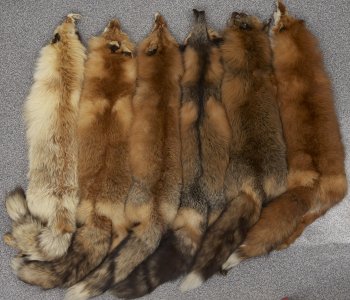
Mammals Skins Collection
Curator:
Natalia Krasnykh.
The collection
comprises 1 230 specimens. Of the greatest interest are the skins of foxes with
geographical variations, as well as a large selection of skins of foxes, arctic
foxes, sables, minks, martens held in cages and bred in fur farms. Worth to be
noted is a good series of skins of large predatory mammals: wolves, tigers,
leopards, lynxes, brown bears from various regions of Russia and adjacent
territories. There is also a wide range of specimens with variability in color
of the fur - moles, squirrels, and chipmunks.
A significant part of
the collection was formed with the assistance of the Union Soyuzpushnina,
cooperation with which lasted more than fifty years. Unfortunately, most of
this material doesn’t have appropriate scientific description, since the skins
came as raw materials from hunters and fishermen from all around the Soviet
Union. The skins of exotic animals came mainly from the Moscow Zoo.
In recent
years, the collection of skins has been replenished by the specimens
confiscated from poachers - four skins of tigers, three skins of zebras, and one skin of a snow leopard.
Skins of the red fox
(Vulpes vulpes L.). Normal color on the left, in the center and on the right
color variations obtained by breeding on fur farms.Skins of the European mink (Mustela lutreola L.). Color variations obtained by breeding on fur farms.
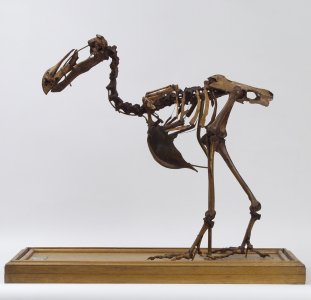
Osteology collection
Curator:
Dmitry Miloserdov
The collection holds 2 137 specimens - skeletons and skulls of mammals, as well as
representatives of other classes of vertebrates. Skulls are the most numerous,
representing various mammals of almost all orders. The collection also contains
full skeletons and their fragments, and individual bones.
Some of the remarkable
specimens are the skulls and skeletons of exotic mammals, skulls of
representatives of the pig family, such as Buru babirusa and common warthog, along
with skeletons and skulls of primates, including apes, and full skeletons of
narwhal and manatee. The skulls of the hippo, Indian elephant, dugong, African black
rhinoceros and Indian rhinoceros are worth mentioning.
Of
particular interest is the collection of the
horns of Ungulates (499 specimens, including over 50 specimens with
abnormalities). There are some valuable specimens, such as the horns of African
even-toed ungulates (Artiodactyla), as well as horn materials of European and American
bisons.
Of
historical interest is a series of horns - trophies
of the Russian imperial hunts – European bison, moose, red deer, roe deer,
caught in the early twentieth century in Białowieża Forest by the emperor Nicholas
II of Russia and members of the royal court.
In 1997, Osteology collection was replenished with an extensive selection of tusks of African elephants confiscated by the Sheremetyevo airport customs
and transferred for permanent storage to the Darwin Museum.
Some of the
outstanding specimens are the full
skeletons of hummingbirds, flamingos and some species of the Casuariiformes
order, as well as the skeleton of the dodo from the island of Mauritius.
Skulls of bears. The
skull of the polar bear on the left (Ursus maritimus hipps), of the brown bear on
the right (Ursus arctos L.).The European Bison horns (Bison bonasus L.). The trophy of the Russian imperial hunt. Obtained by Emperor Nicholas II in Białowieża Forest on September 2, 1897 (according to the Julian Calendar).
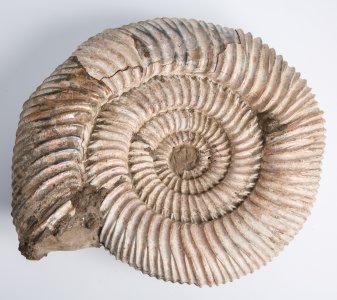
Paleontology collection
Curator: Alexander Areshin.
19 216 specimens.
The collection is being formed since the 1970s and comprises mainly the
materials collected by famous researchers and collectors.
The first specimens
were purchased by Alexander Kohts abroad in the early 20th century,
such as the so-called “lithographic limestone” with imprints of aquatic
arthropods from Solnhofen - the world-famous location of the Late Jurassic
fauna in the German state of Bavaria. These samples are also the oldest among
Darwin museum's specimens according to the time they were collected, dating back
to 1876.The collection
contains extensive material from the Paleozoic deposits of the Moscow Region (stratotypes
of some stages), the Leningrad Region, the central regions of European Russia,
the Devonian of the Voronezh Region, the Mesozoic Era of the Moscow Region, the
Volga Region, the Mangyshlak Peninsula, and the Crimean Peninsula, the Paleogene
of Ukraine and Crimea, the Lower Paleozoic of the Baltic and Siberia, the
Paleozoic Era and the Triassic of Siberia.
The collection contains all the
major groups of the organic world, including:The remains of Cyanobacteria, lycophytes,
Equisetidae, the Auchenorrhyncha, Ginkgoales, Cordaitales, Coniferophyta, Angiospermae.
The specimens of plants with preserved cell structure are extremely
interesting.Foraminifera
- Fusulinida and nummulite, sponges, the annelids, Echinoidea are widely
represented.Archaeocyatha,
Hydrozoa, jellyfish, Entomostraca, crabs, insects (including inclusions in
amber), starfish, Graptolithina.A great
variety of corals, trilobites, Crinoids, among which the most interesting are
the specimens from the coal deposits of the Moscow Region, gastropods and
bivalves (Paleozoic, Mesozoic, and mainly Cenozoic), cephalopods, including
rather rare Paleozoic nautilides.Vertebrates
are represented by a few, usually fragmented, bone remains of fish, reptiles,
and mammals. The most notable are the remains of fish from the sites in
Germany, the USA, and Russia, amphibians from Moravia (Czech Republic), reptiles
from the Moscow region and Mongolia.A small
osteological collection of the mammoth fauna (bones of a
woolly rhinoceros, horse, steppe bison, mammoth) formed thanks to the
materials of K.K. Flerov, E.N. Mashchenko, V.V. Mitta.Of
particular value is the collection of aberrant whole and fragmentary tusks of a
woolly mammoth, showing rare forms of growth abnormalities.Some of the paleobotanical
materials are of the most interest like the remains of little-known lycophytes,
ferns, and Coniferophyta from the bordering deposits of the Permian and
Triassic systems of the north of Siberia. Sometimes the specimens have been preserved
so well that it is possible to study the cellular structure of the plant remains.
Currently, the collection is actively replenished by the efforts of the museum staff G.N. Sadovnikova, Y.A. Popova, and E.V. Mychko.Teeth of a
fossil shark (Striatolamia usakensis Glickman) from the Glickman’s collection
of the fossil cartilaginous fishes, the State Darwin MuseumAmmonoid (Simbirskites sp.)Brachiopods (Choristites sp.)



































